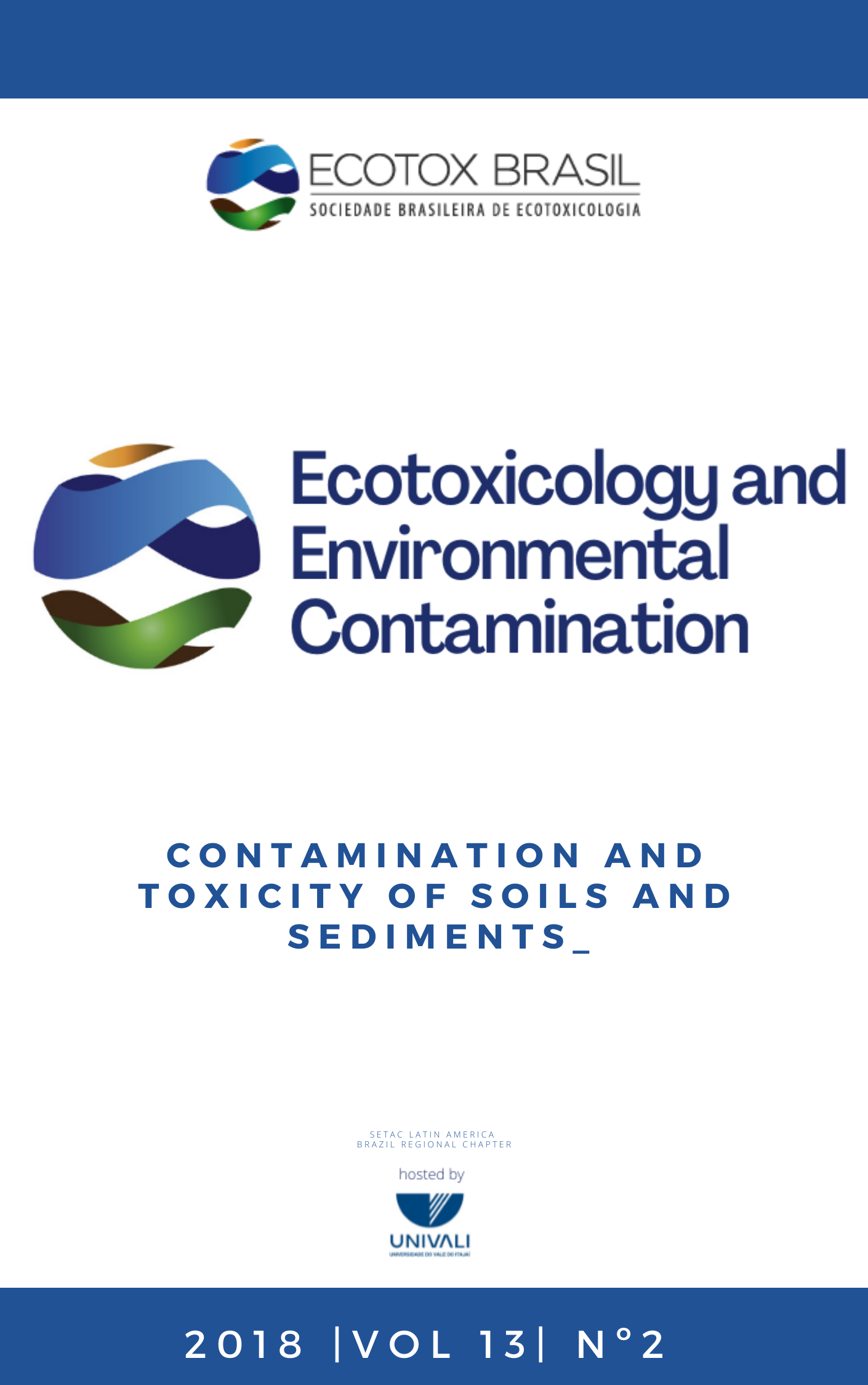Rapid tests for the toxicity evaluation of soil contaminated by lead-acid batteries manufacture
DOI:
https://doi.org/10.5132/eec.2018.02.03Resumo
Lead-acid battery manipulation is one of the major sources of environmental contamination of lead in developing and underdeveloped countries. For the preliminary investigation of the soil ecotoxicological potential of a mechanical workshop with deposit of lead-acid battery tailings, the avoidance behavior response test with Eisenia andrei and the phytotoxicity test with Lactuca sativa were made. The quantification of cadmium, copper, lead, zinc, manganese, iron and arsenic, was also performed. The level of lead found in the test soil was 56 times higher than the permitted value in Brazilian legislation, but the soil only showed toxicity in the avoidance behavior response test with earthworms. None of the phytotoxicity tests showed toxicity to lettuce seeds in germination rate and seedling length. This preliminary study confirms the contamination of these sites by lead and indicates that this contamination can cause damages to the edaphic fauna, suggesting further studies in areas contaminated by tailings of lead-acid batteries.Downloads
Downloads
Publicado
Como Citar
Edição
Seção
Licença
Copyright © 2006 ECOTOX-BRAZIL
Copyright notice: It is a condition for publication that manuscripts submitted to this journal have not yet been published and will not be simultaneously submitted or published of elsewhere. By submitting a manuscript, the authors agree that copyright for their article is transferred to the Sociedade Brasileira de Ecotoxicologia (ECOTOX-Brazil) if and when the article is accepted for publication. The copyright covers the exclusive rights to reproduce and distribute articles, including reprints, photographic reproductions or any other reproduction of a similar nature, including translations. No part of this publication may be reproduced, stored in a retrieval system or transmitted in any form or by any means, electronic, mechanical, photocopying, recording or otherwise, without permission of the publisher.
Notice: While every effort is made by the JBSE, editors and editorial board to see that no inaccurate or misleading data, opinions or statements appear in this journal, they wish to make it clear that the contents of the articles and advertisements published herein are the sole responsibility of the contributors or advertisers concerned. Accordingly, the JBSE, the editorial board and editors and their respective employees, officers and agents accept no responsibility or liability whatsoever for the consequences of any inaccurate or misleading data, opinion or statement.




